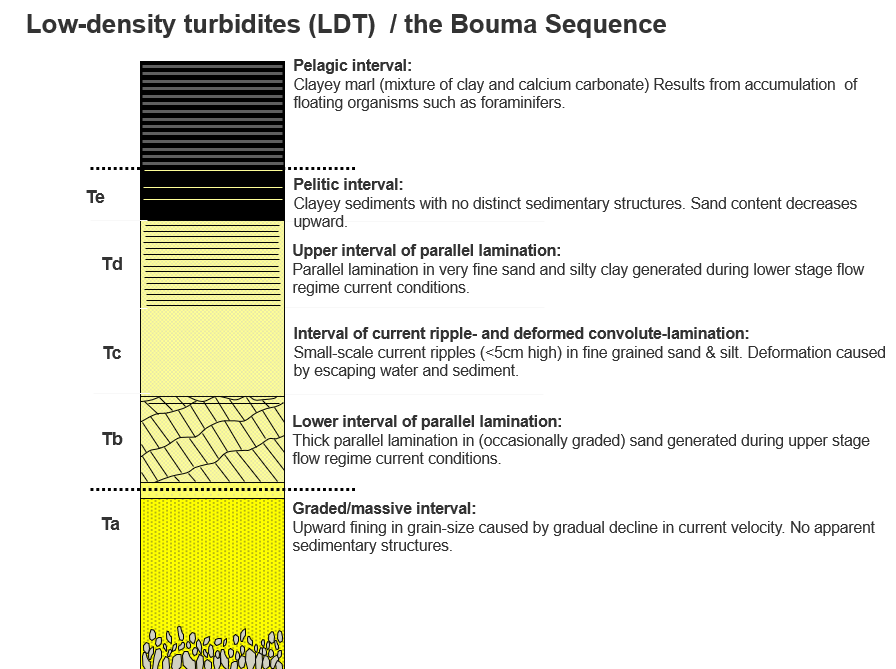Week 7,8 - Deep water sedimentary systems: process to product
1/21
There's no tags or description
Looks like no tags are added yet.
Name | Mastery | Learn | Test | Matching | Spaced |
|---|
No study sessions yet.
22 Terms
Define deep water systems
Below the storm-wave base
Topographically low → particles moved there under gravity and find it difficult to get out
The Grand Banks disaster
1929 earthquake
Upper continental slope with a steep margin
20km deep strike slip fault caused a 50m/s landslide that broke seafloor cable
First direct evidence of natural turbidity currents
Features of turbidity currents
A flow driven by the action of gravity upon the density excess of a sediment laden fluid within an ambient fluid. Sediment is maintained in suspension by the upwards (and chaotically) directed turbulent flow cells
Flows have a dominantly Newtonian rheology
In the absence of turbulence, particles will settle from suspension
In the absence of sediment, the flow will stop (unlike a river)
Deposit character of turbidites is directly linked to the rate of deposition, which, in turn is linked to the steadiness of the flow
Hypopycnal flow
Inflow water density < basin water density
Less dense fluid enters the more dense fluid and floats across the surface

Hyperpycnal flow
Inflow water density > basin water density
More dense fluid enters a less dense fluid and travels along the bottom

Density of freshwater and seawater
Freshwater = 1g/cm³
Seawater = 1.02g/cm³
Deposit of turbidity currents
Turbidites
Deposit of debris flows
Debrites
Deposit of hyperpycnal flow
Hyperpycnite
Deposit of pelagic sediments
Pelagite
Deposit of hemipelagic sediment
Hemipelagite
Deposit of channels
Channel fills
The Bouma sequence
Low Density Turbidites

High Density Turbidites

Distribution of LDTs
Billow out in clouds of sediments forming a lobe shape thinning outwards

Distribution of HDTs
Branching of channels

Combination of turbidites
Classic fan model
Thick bedded turbidites
Structureless
Often deposited by high density turbidity currents in channels
Thin bedded turbidites
Often deposited in levees
Normally graded often with ripples
Debris flows
A debris flow is a high concentration (typically >40%) mixture of fluid and sediment which flows downslope due to gravity. Particles are supported in the flow by the sediment and pore pressure in the flow
Flows have a dominantly non-Newtonian rheology
Particles are supported by the flow matrix strength and pore fluid pressure which creates a buoyancy force
Deposit character is directly linked to the flow content. Flows freeze ‘en-masse’ and the deposit represents what the flow was at that time
Slides and slumps
Basal detachment
Dominated by intact, but rotated bedding
Occur mainly on slopes
AKA mass transport deposits
Thermohaline currents
Flows driven by temperature and salinity